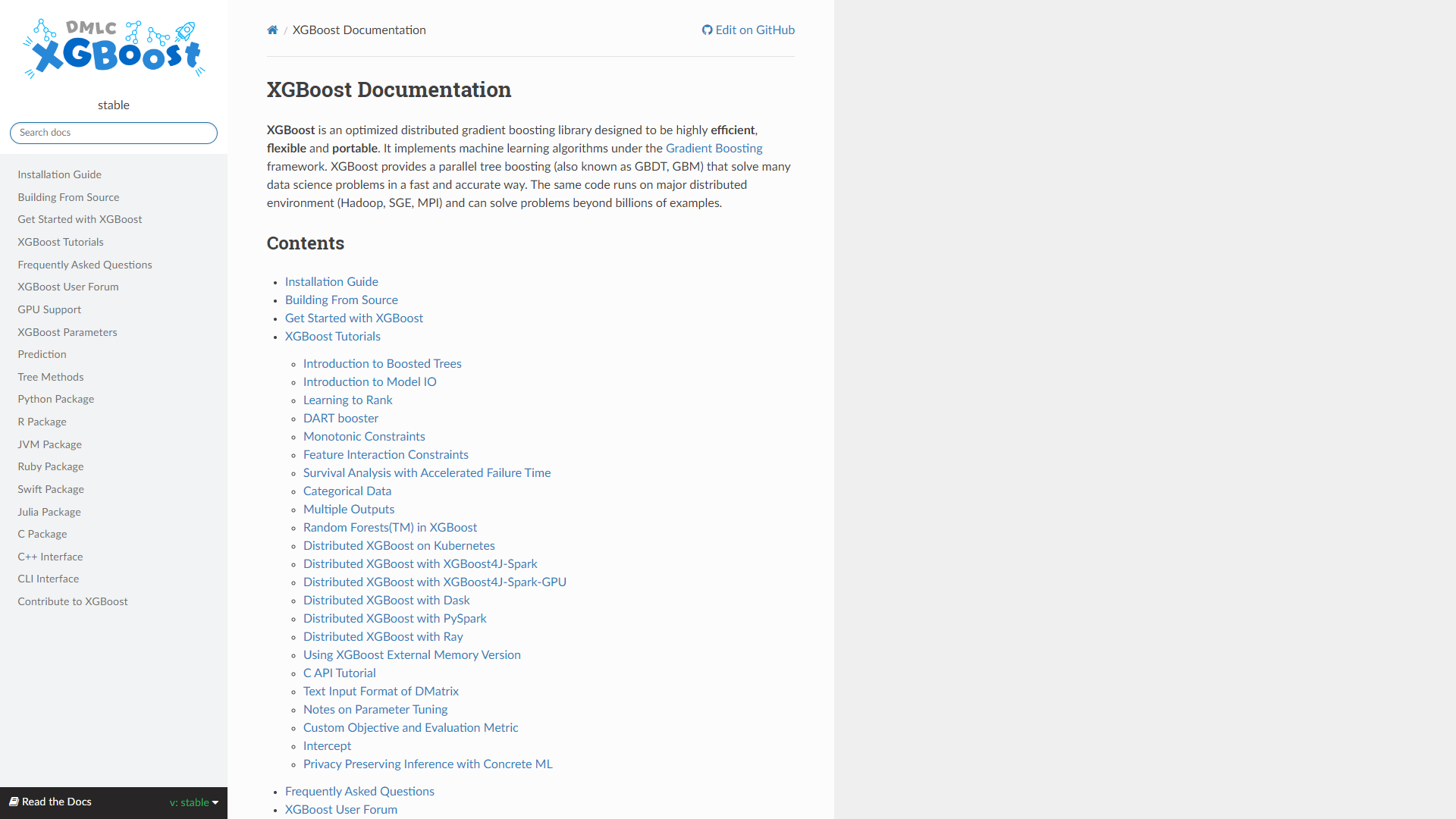
XGBoost
XGBoost is a powerful machine learning algorithm used for classification and regression tasks.
🏷️ Price not available

- Overview
- Pricing
- Features
- Pros
- Cons
Overview
XGBoost, or Extreme Gradient Boosting, is an advanced implementation of gradient boosting. It is designed to improve speed and performance, making it a popular choice among data scientists. The core of XGBoost is its tree-based model, which enhances performance by learning from errors in previous iterations.
XGBoost stands out due to its scalability, efficiency, and flexibility. It supports parallel processing, which means it can handle large datasets quickly. Additionally, it includes various options for model tuning, allowing users to fine-tune models for better accuracy.
Moreover, XGBoost has garnered community support and is widely used in Kaggle competitions. This gives users access to a rich set of resources, including tutorials and pre-trained models, which can help them get started faster.
Pricing
| Plan | Price | Description |
|---|
Key Features
🎯 High Performance: XGBoost is known for its superb execution speed and model performance on large datasets.
🎯 Supports Parallel Processing: The algorithm processes multiple threads simultaneously, speeding up computations.
🎯 Regularization: It provides L1 and L2 regularization options to reduce overfitting and enhance model generalization.
🎯 Scalable: XGBoost can efficiently work with large datasets, optimizing memory usage and speeding up training time.
🎯 Flexibility: Users can define custom optimization objectives and evaluation criteria, tailoring the model to specific needs.
🎯 Tree Pruning: Utilizes a more efficient algorithm to prune trees, improving the learning process.
🎯 Cross-validation: XGBoost includes built-in cross-validation functions to assess model performance more accurately.
🎯 Supports different languages: It can be implemented in several programming languages like Python, R, and Java, making it versatile.
Pros
✔️ Fast processing: XGBoost works quickly, even with large datasets, thanks to its optimized algorithms.
✔️ High accuracy: It often performs better than other models, making it a favorite for competitions and real-world applications.
✔️ Easy to use: With extensive documentation and community support, users can learn and implement it easily.
✔️ Highly customizable: Users can tweak many parameters, giving them control over the model's behavior.
✔️ Feature importance: XGBoost provides insights into which features are most influential in predictions.
Cons
❌ Complexity in tuning: With many parameters to adjust, tuning the model can be challenging for beginners.
❌ Risk of overfitting: Without proper regularization, it can fit too closely to the training data.
��❌ Memory usage: For extremely large datasets, it might require more memory than other simpler algorithms.
❌ Steeper learning curve: New users may find it difficult to grasp all aspects of the algorithm initially.
❌ Dependency on data quality: The model's performance relies heavily on the quality of the input data.
Manage projects with Workfeed
Workfeed is the project management platform that helps small teams move faster and make more progress than they ever thought possible.
Get Started - It's FREE* No credit card required
Frequently Asked Questions
Here are some frequently asked questions about XGBoost. If you have any other questions, feel free to contact us.